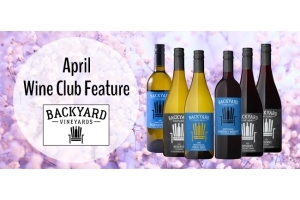Bonjour, Beaujolais Nouveau

I can't wait for Thursday. That it's a frigid -12 degrees Celsius outside is a minor deterrent. The certainty that tomorrow's snow will stick to the ground thereby forcing me to wear boots and face the fact that I have officially lost the fight to keep my Chuck Taylors on my feet isn't even bringing me down. This is because Thursday, Nov. 20 is Beaujolais Nouveau Day.
For those unfamiliar with this French tradition, here's a quick recap. Just south of Burgundy lies an area in France that is famous for its Gamay grapes and the production of a light-bodied, vibrant and fruity red wine called Beaujolais after the region from which it hails. Beaujolais Nouveau goes one step further - grapes are hand-harvested, then transferred to an enormous container filled with carbon dioxide where they undergo carbonic maceration, or whole berry fermentation, whereby whole grapes are fermented in this carbon dioxide. Crushing takes place naturally by the grapes at the top of the container weighing upon those at the bottom which start to ferment and release more carbon dioxide. This high CO2 environment causes fermentation to occur inside the uncrushed grapes. The wine that is produced as a result of carbonic maceration is incredibly fresh, fruity, and often has sweet, candied notes. It also has lower alcohol and next to no tannins. It's very quaffable.
This practice was started a century ago by Beaujolais locals who wanted to make a quick beverage to celebrate the end of harvest. While the more serious Beaujolais was taking its due course, Beaujolais Nouveau was picked, fermented, bottled and consumed often within 4-6 weeks of harvest. This is the core of what Beaujolais Nouveau is - the immediate expression of grapes that, merely weeks ago, were still hanging on the vine.
In the 1960's, a race from Beaujolais to Paris with the first bottles of the new vintage started a tradition of getting the wine to city centres for quick sales. This rapidly gained media attention and the Beaujolais Nouveau hype has snowballed from there, spreading to neighbouring European countries in the 1980's, then North America in the 1990's, and recently to Asia. Worldwide, Beaujolais Nouveau is now released on the third Thursday of November at 12:01am local time.
Every year, I look forward to my first sips of Beaujolais Nouveau. Many wine connoisseurs would say it's not serious enough for their tastes and, certainly, it's a very different style of wine. It's not meant to be aged and laboured over, rather it's produced quickly and intended to be consumed just as fast. I find the wine refreshing. I imagine what the conditions were 6 weeks prior in east-central France, what harvest might have been like, the journey across the ocean to reach us in Canada. Arguably, you could wonder the same things with a cellared bottle of Bordeaux, but for me the magic of Beaujolais Nouveau is in its immediacy. The short fermentation time and lack of meddling elements leaves no room for fixes and tweaks. Its a pure, unapologetic expression of a time and place that is so recent that we can imagine it.





